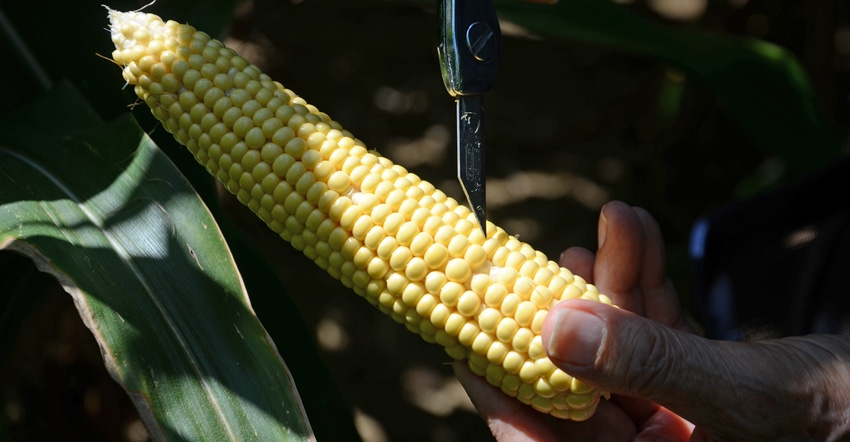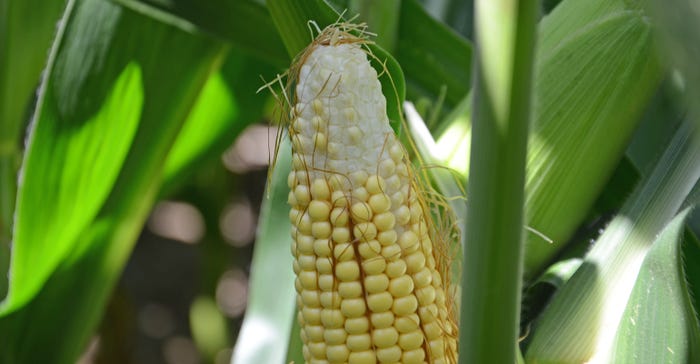
Rains and fewer stretches of high heat later in the season may tempt you to forget about heat and dry weather in June and July. However, corn plants don’t forget.
“Overall, I am surprised by prospects for good yields in the Corn Watch ’22 field in central Indiana, since it endured a long period of drought and heat,” Dave Nanda says. “However, when you pull back husks, it’s evident that weather conditions left their mark.”
Related: Can plants with clipped silks still pollinate?
Nanda is director of genetics for Seed Genetics Direct. The Ohio-based seed company sponsors Corn Watch ’22.
“Yield impact shows up in two primary ways,” Nanda says. “There may be missing kernels here and there throughout the ear. These are likely pollination failures linked to excessive heat.
“In most cases, it is a kernel or two together in various spots along the ear. Overall, it’s a small amount, but it adds up.”
The second cause is fewer kernels per row, due to shorter ears and aborted tip kernels. “You can find ears with 40 kernels per row, but I was finding 32, 34 and 36 kernels per row more often,” Nanda says.
Here’s a closer look:
Missing kernels. Here’s an example illustrating how scattered missing kernels could impact yield.
Suppose you determine the average ear has 16.7 rows with 35 kernels per row and 32,000 ears per acre. You assume every row contains a full 35 kernels, with no blanks. Use 85 as the fudge factor representing kernel size. The estimated yield becomes (16.7 x 35 = 584.5 kernels per ear) x 32 ears per 1/1,000 acre = 18,704 kernels per acre divided by 85 = 220 bushels per acre.
However, you determine an average of two kernels per row are missing. That’s 33.4 kernels per ear, or 6% fewer kernels.
The new calculation is: 18,704 kernels per acre x 0.94 = 17,582 kernels per acre divided by 85 = 207 bushels per acre. Missing kernels here and there add up to real bushels.

Shorter ears. Here’s the impact of just three fewer kernels per each row. Return to the example with an average of 16.7 rows of kernels, 35 kernels per full row (no skips) and 32,000 ears per acre. That’s 18,704 kernels per acre and an estimated 220 bushels per acre, with 85 as the fudge factor for kernel size.
Suppose everything is the same, but now there are only 32 kernels per full row, due to the impact of dry weather. The calculation is: (16.7 x 32 = 534 kernels per ear) x 32 ears per 1/1,000 acre = 17,088 kernels divided by 85 = 201 bushels per acre.
Double whammy. If you have ears with both 6% scattered missing kernels and shorter ears at 32 kernels per row, the yield estimate for this example becomes 189 bushels per acre.
About the Author(s)
You May Also Like




